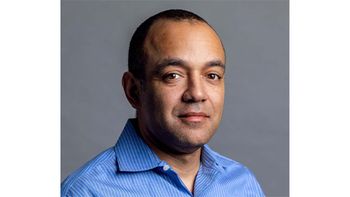
US pharma promotional spending dropped 8% in 2012, says Cegedim Strategic Data
Meanwhile, MD Mindset survey shows heightened interest in virtual sales calls
The annual summary of promotional spending by Cegedim Strategic Data (CSD; Jersey City, NJ) showed a nearly across-the-board decline in 2012, with the year’s total spending of $27.35 billion dropping by 8% from the year before. And 2011 had also shown a decline, by 3%. But Jerry Maynor, business development director at CSD, expects a turnaround in 2013 due to the increased number of new product launches over the past few months, and some major new ones expected this year.
CSD bases its data on a global panel of about 200,000 healthcare providers annually, getting responses on numbers of rep calls, quantities of samples handed over, meetings attended and so forth. Because the data are aggregated internationally, promotional spending also includes participation in late-stage or post-launch trials (which is considered a marketing expense in Europe, says Maynor). Samples value is calculated based on Average Wholesale Price (AWP). Selected results:Detailing, $15 billion, down 5%; Samples, $5.72 billion, -5%; Meetings, $2.14 billion, -2%; mailings, $1.16 billion, +16%; clinical trials, $0.13 billion, -13%. Total spending includes estimates for DTC advertising and print journal advertising.
Last year, CSD began looking at electronic promotional media, focusing on use of “electronic visual aids” during details (presentations delivered in-person via interactive tablets, laptops or hand-held devices)—something that is
Virtual calling
Meanwhile, another market researcher, MD Mindset (Whitehouse Station, NJ) has polled its panel of US physicians to see the impact of virtual sales calls (which occur via online presentations). As of December 2012, when the survey was conducted, 59% of physicians had “never” or “rarely” experienced a virtual sales call (46.1% of primary doctors; 66.7% of specialists), but 70% are “likely” or “possibly” willing to do so (76.9% of primary care; 66.1% of specialists). Of the relatively small number who have experienced a virtual call, reactions were mostly positive, although while primary care physicians said that they preferred a virtual call to a face-to-face interaction by a 53% margin, only 38% of specialists evinced a preference for virtual calls. The preferred time for conducting virtual calls is mid-day (12-2 pm) or after 6 pm for primary care (specialists top choice is the 4-6 pm slot; after 6 pm, preference drops to 9.5%). The optimal duration of the call should be 2-5 minutes, and the majority of all physicians preferred a schedule time of the call.
“Especially as the proportion of ‘no see’ physicians grows, there is a call for alternative techniques like virtual presentations,” says Dr. Peter Shaw, president of MD Mindset. “Our polling shows that there’s a desire for this information, especially if it’s quick, to the point, and has visual elements that attract and keep the physician’s attention.”
Newsletter
Stay ahead in the life sciences industry with Pharmaceutical Commerce, the latest news, trends, and strategies in drug distribution, commercialization, and market access.





